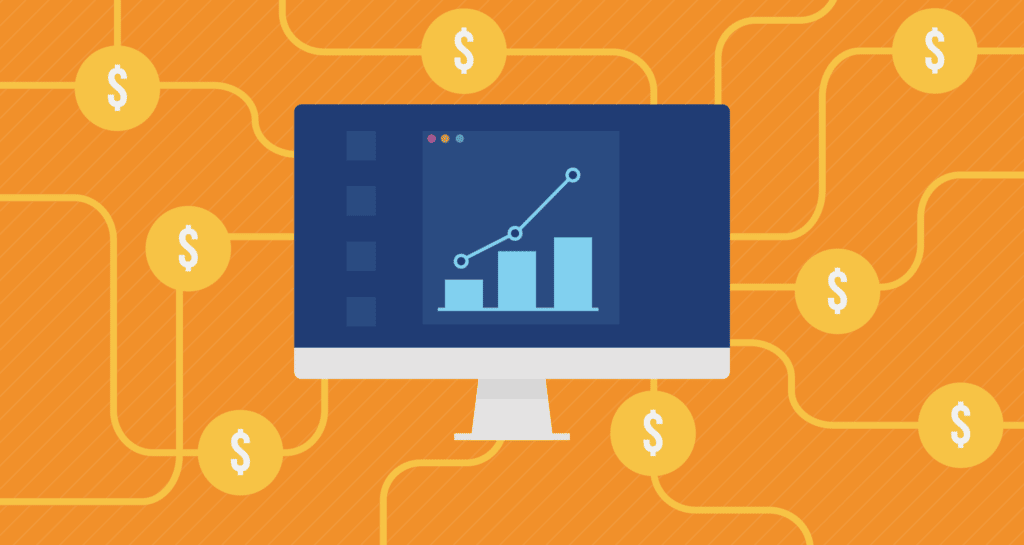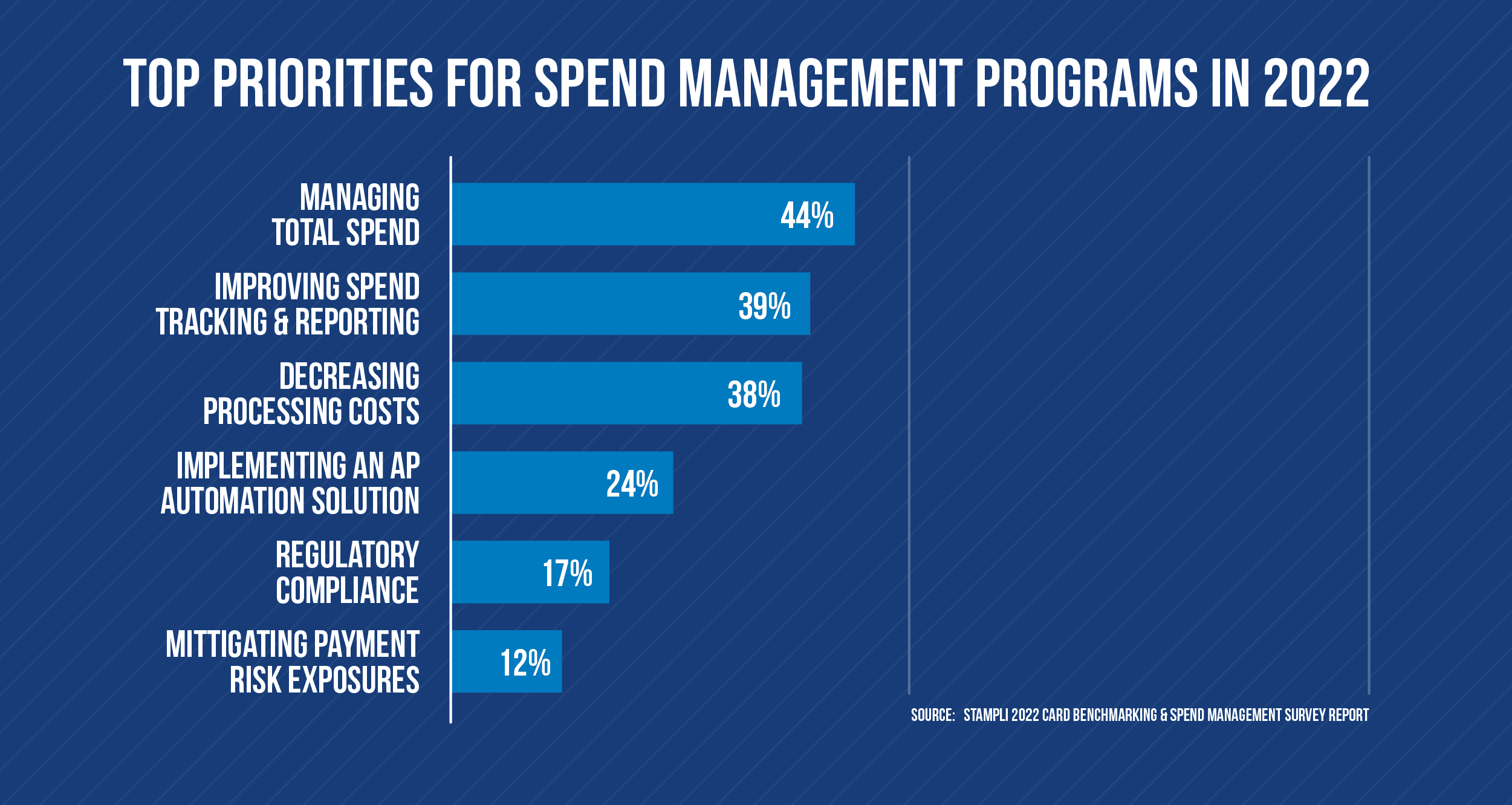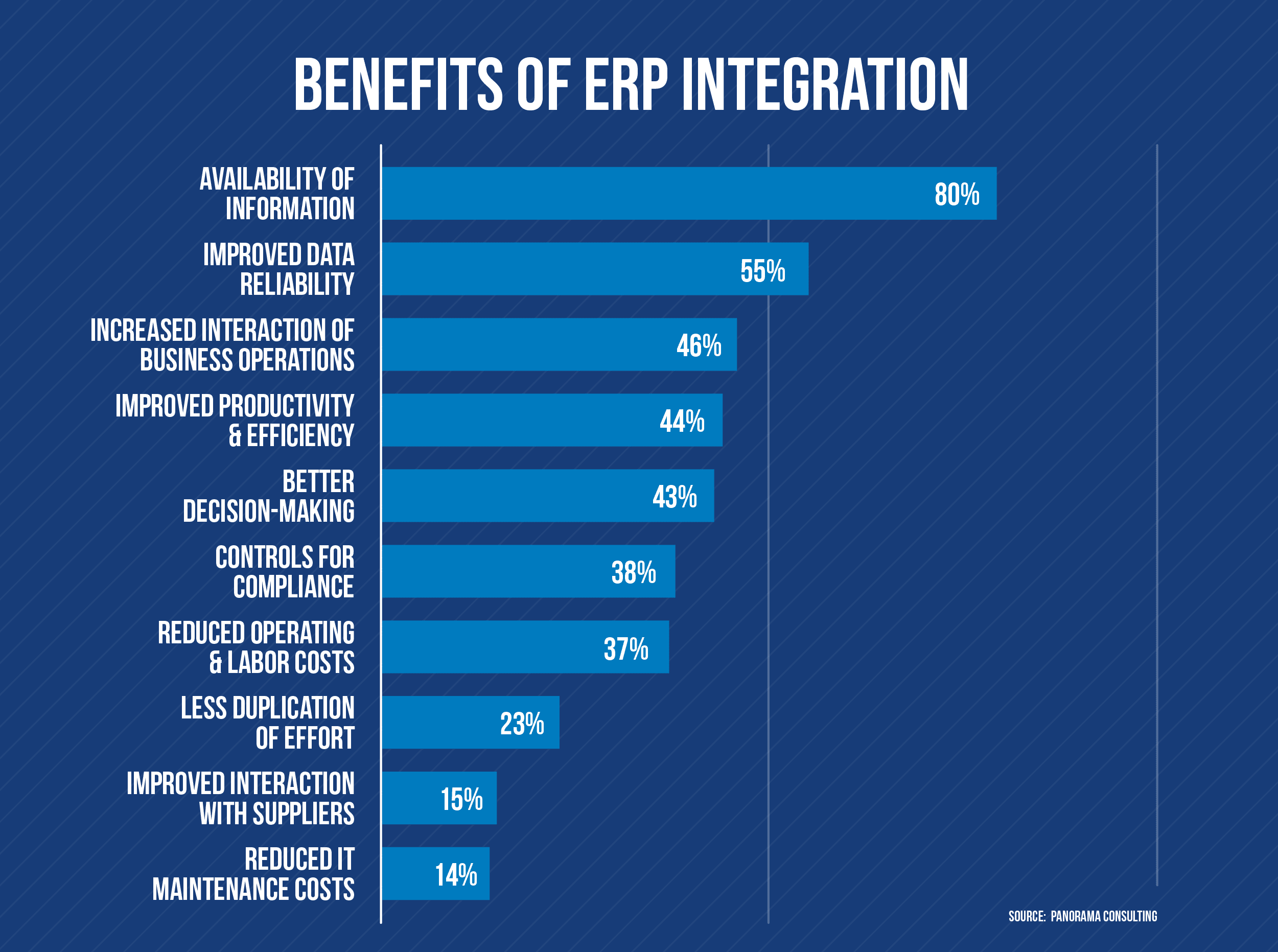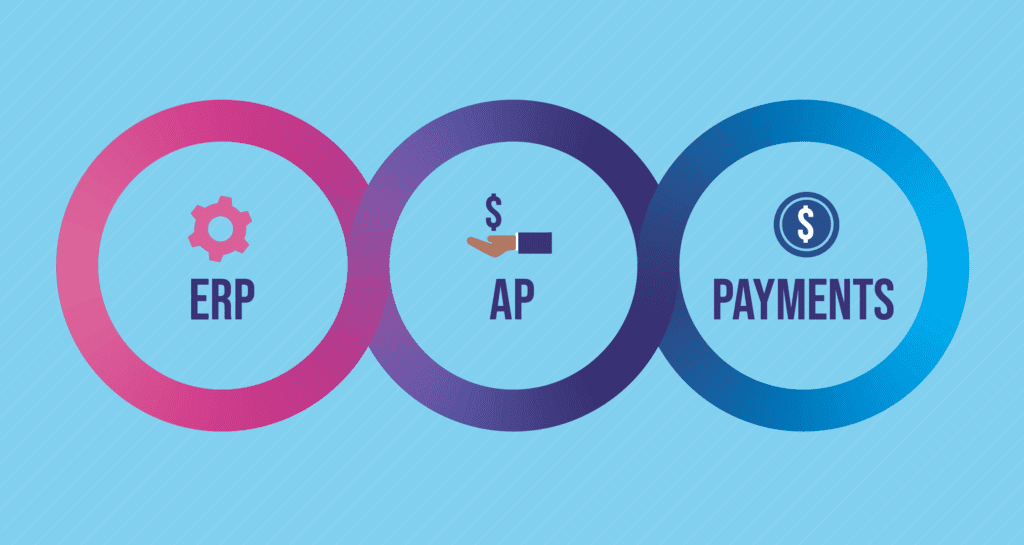How to Optimize Your ERP B2B Payments System

Enterprise Resource Planning (ERP) systems are at the heart of most back-office operations. Originally designed to manage production processes and data, ERPs have evolved into a powerful business tool as company needs have changed. Investing in an ERP is a solid business decision – in a 2019 survey, 85% of businesses reported that they projected a timeline for ROI on ERPs, and 82% of those businesses achieved their target. Today, organizations use ERPs to automate almost every process and to centralize, manage and share data across departments. But there’s one significant area where ERPs have not evolved as quickly: accounts payable and B2B payments.
Most businesses still process their accounts payable and B2B payments with a mix of disconnected point solutions, legacy systems, and manual processes. These processes are typically not integrated into an ERP, which means AP and payments data must be manually entered into the ERP financial system. As a result, data is often inaccurate, incomplete, or outdated.
In this podcast episode, Rachita Sundar, SVP of Finance at HubSpot, explains the importance of having accurate data to manage a business. Insufficient data slows down payments, increases the risk of errors, and impairs the company’s ability to make informed decisions.
CFOs are under increasing pressure to optimize their accounts payable and payments workflows, and many are looking to automation as a solution. Data connectivity and visibility are top priorities – finance leaders require real-time data connectivity and visibility to track and manage payments, maintain a complete AP audit trail, control risks, and make informed business decisions.
With their flexibility and capabilities, ERPs are well-positioned as powerful tools to optimize AP and payments processes and share data. However, many businesses need help to take full advantage of ERP integrations to optimize AP workflows because of the difficulty of synchronizing AP data with existing AP and payments processes.
A new breed of ERP-integrated, automated AP and payment solutions is emerging to meet this challenge. These solutions leverage the capability of ERP systems to unify and optimize workflows and payment methods, directly integrate with ERPs, and provide real-time data flows across the organization.
This guide will discuss these new AP solutions, their benefits, and how to choose the right solution for your business.

The Efficiency Gains from ERP
The primary reason for a business to implement an ERP solution is to increase efficiency and accuracy. In August 2022, PYMNTS.com reported that 95% of CFOs surveyed said implementing an ERP improved their business processes. Two-thirds of companies with more than 2,500 payables per month said ERPs are “very or extremely important” for managing the growth in payable transactions.

AP and payment automation solutions streamline and optimize the procurement-to-pay workflow. These steps increase processing efficiency and centralize, track and manage payment data, documents, and communications. Tightly integrated ERP, AP, and payments solutions leverage the ERPs capabilities so the business can:
Share Data
Real-time data sync between the AP platform and the ERP ensures a single point of truth across the organization and supply chain.
Manage Transaction Information
AP automation and payment processing solutions track, route, and record documents, communications, approvals, and payments and sync the information with the ERP.
Digitize, Organize, and Store Documents
The AP automation system automatically scans and digitizes paper invoices, receipts, and purchase orders, codes invoices, performs three-way matching, and updates the relevant ERP modules.
Reconcile Invoices
The AP automation platform facilitates real-time invoice reconciliation by sharing digitized and coded invoice information with the financial and accounting systems.
These enhanced capabilities make the P2P process more efficient and effective. They also provide the business with some other significant benefits.
Benefits of Integrating ERP Software and Payments Systems
Integrating AP and payments with an ERP improves B2B payments efficiency and provides better communications and transparency across the P2P process. This brings with it some key advantages for your business:
Integrated Payment Methods Across the Business
Moving to an automated AP and payments platform lets your business integrate multiple payment options into a single platform and payment gateway. Automation reduces costs, simplifies the payments process, reduces human errors, and improves vendor relationships. For example, an automated payments system can replace expensive and inefficient paper checks with an electronic method such as ACH payments or credit cards.
Eliminated the Need for Manual Entry and Reconciliation of Payments
Automated document entry, coding, payment processing, and reconciliations free up the AP and accounting employees from manual processes so they can focus on higher-value business tasks.
Improved Collaboration Across the Organization
Payments data is centralized in the ERP and shared across the business, so every employee works from accurate real-time information.
Reduced IT Costs
Integrating systems, replacing multiple legacy systems, and moving to cloud-based SaaS ERP and AP solutions reduce IT overhead and the need to invest in additional software or hardware.
Faster Payments to Suppliers
Improved payment efficiency means that the business can pay suppliers on time to avoid late fees and potentially take advantage of early payment discounts.
Improved Audit Trail and Compliance
Automation helps enforce internal controls and segregation of duties and tracks and records all documents, transaction data, approvals, and communications in real time. This capability increases transparency and control over the P2P process and helps build a complete AP audit trail.
Better Risk Management
Improved internal controls, secure and traceable transactions, and centralized and transparent payments data make detecting and preventing fraud and errors easier for your business.
Informed Decision-Making
By providing the ERP with accurate and timely business data, integration enables CFOs to make informed business decisions. For example, knowing exactly how much money the business has makes it much easier for the CFO to manage cash flow and make investment or borrowing decisions.
Integration of AP and payments systems with your ERP has clear benefits. However, many businesses face a significant challenge – most of the benefits of integration rely on efficient connectivity and data sharing between platforms. Choosing an AP automation and payments platform that seamlessly integrates into your ERP is vital.
The Challenge – Seamless Data Sharing

In ERP Solutions in B2B Solutions: August 2022, PYMNTS.com reported that 99% of businesses said they struggled to access information via their ERP systems. Of those businesses, 82% said their business was making decisions based on inaccurate or outdated data, and 85% said that bad data led to them making the wrong business decisions and losing revenue.
To fully realize the capability of their ERP system to optimize accounts payable and payments processes, businesses must look to the quality of the integration between their business systems. The best AP automation platform in the world will be of little value if it can’t sync payment data to other systems. Transparency and effective communications rely on seamless integrations and reliable and accurate synchronization between AP and payments systems and the ERP.
When looking at AP and payments automation service providers, ensure that the provider can not only assist with the logistics of automating your P2P workflows but that they also have a proven track record of successful integration with ERPs such as Oracle Netsuite or SAP.
The best solutions will easily integrate your processes, support a variety of payment methods, centralize and track communications, provide a complete audit trail and data transparency, and offer API or other integrations to accurately sync data with your other business systems. That’s what Stampli and Stampli Direct Pay offer.
Stampli’s AP automation and payments solution can unlock the capabilities of your ERP to optimize your P2P workflow. Stampli is the recognized leader in AP automation, earning a #1 ranking on G2 in Usability, Support, Implementation, and Results. With proven successful integrations with most major ERPs and a track record of helping businesses improve their AP processing, Stampli is the ideal partner for ERP and payments optimization.
Want to learn more? Contact Stampli today for a free demo.
